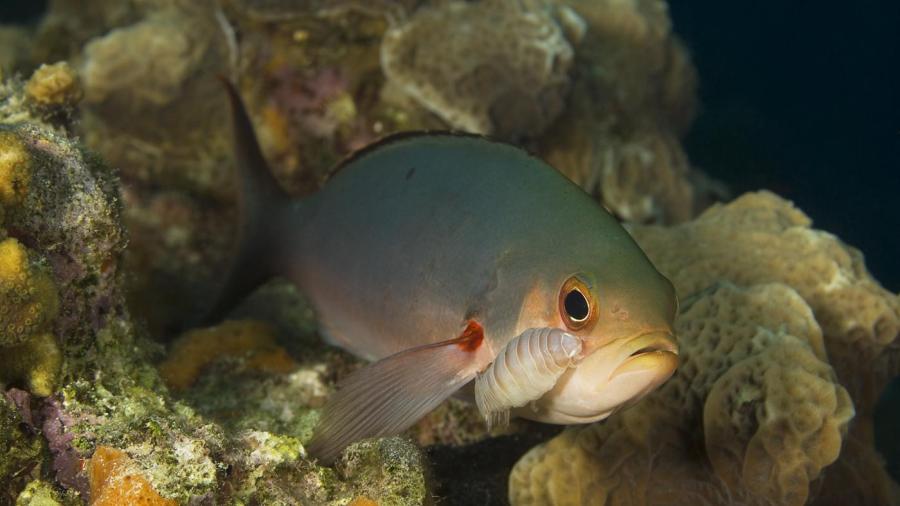What Is an Example of Parasitism in Coral Reefs?

One example of a parasitic relationship in coral reefs includes crustaceans from the Copepoda or Isopoda orders, which attach to fish in the reefs, sometimes causing harm but at other times simply holding on and feeding on food particles that float by them. Coral reefs feature organisms that coexist in a number of different relationships, including parasitism, but also symbiosis, competition, commensalism and mutualism.
While some parasites do not harm their hosts, others do. Ectoparasites remain latched to their hosts, taking away key sustenance; however, this is far from the only connection between organisms in a coral reef environment.
Mutualism refers to symbiosis that benefits both species. One example is the relationship between the Boxer crab and some species of anemones. The crab grasps the anemone in its claws so that the anemone’s stinging tentacles keep predators at bay; the anemone benefits by eating the crab’s leftovers.
Commensalism refers to symbiosis in which one species protects another, such as the connection between anemones and clownfish. The clownfish dwell within the tentacles of the anemones, coated with mucus so that the stings from the anemone do not affect them. Other animals, such as shrimp and crab, seek shelter in anemones while never having to leave the relative safety of the tentacles.
Competition refers to a state in which species are fighting for resources. As population goes up, so does competition, leading to a correction in population as younger adults die and reproduction slows down.





